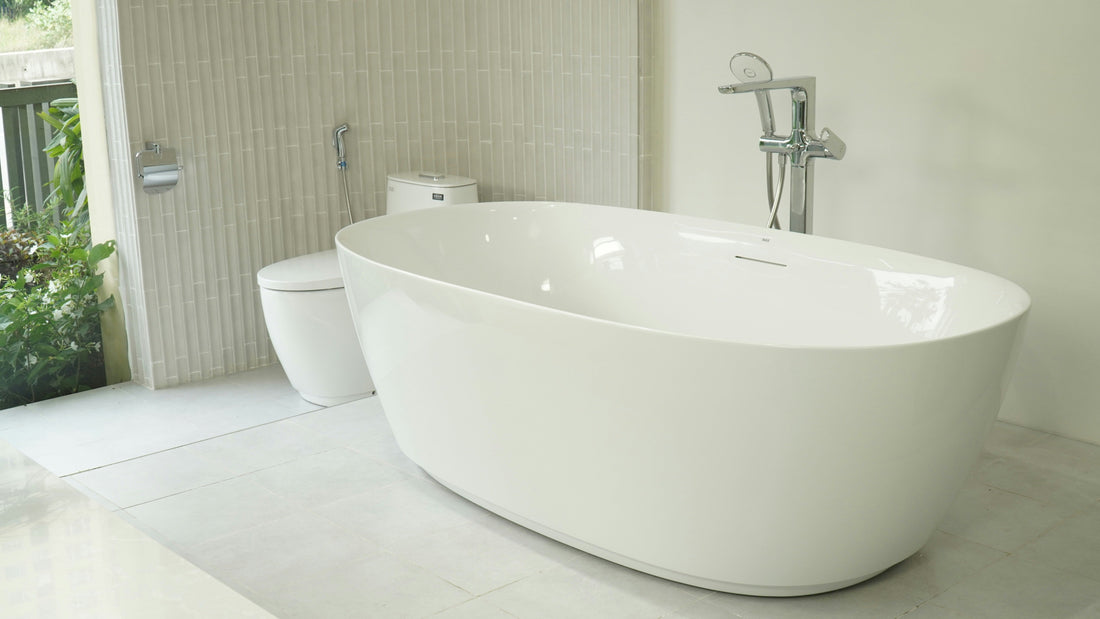
Pros and Cons of Not Having a Bathtub in the Master Bathroom
Share
When designing or remodeling your home, the master bathroom is a key space that combines functionality with personal comfort. One of the most debated features in modern bathroom design is whether or not to include a bathtub. While some homeowners can’t imagine their master bathroom without one, others are opting to skip the tub entirely.
So, what are the benefits and drawbacks of not having a bathtub in the master bathroom? Let’s dive into the pros and cons to help you decide what works best for your lifestyle and property value.
Benefits of Not Having a Bathtub in the Master Bathroom
This is the introduction paragraph.
1.) More Space and a Cleaner Layout
Removing the bathtub can open up valuable square footage, giving your bathroom a more open, spacious, and modern feel. This is especially beneficial in smaller master bathrooms where every inch counts.
2.) Modern Aesthetic Appeal
Walk-in showers, especially those with frameless glass and sleek tile designs, are trending in contemporary bathroom design. Not having a tub can give your bathroom a more streamlined, luxurious look that aligns with modern design preferences.
3.) Faster and More Efficient Cleaning
Bathtubs are often harder to clean due to their size and shape. A walk-in shower with large tiles or minimal grout lines is generally easier and quicker to maintain, making it ideal for busy households.
4.) Practical for Daily Use
Most adults prefer quick showers over baths for daily hygiene. Without a tub, you can design a larger, more comfortable shower space with built-in benches, rainfall showerheads, and other spa-like features.
5.) Increased Accessibility
For aging homeowners or those with mobility issues, a walk-in shower with grab bars and zero thresholds is much safer and easier to use than a bathtub.
Drawbacks of Not Having a Bathtub in the Master Bathroom
1.) Potential Impact on Resale Value
One of the biggest concerns about not having a tub in the master bathroom is resale. Many buyers—especially families with young children—consider a bathtub a must-have feature. Not having one could limit your buyer pool when it's time to sell.
2.) Less Relaxation Options
While showers are convenient, they don’t offer the same opportunity to unwind. For those who enjoy soaking after a long day, the absence of a bathtub can be a major downside.
3.) May Limit Functionality
A bathtub isn't just for bathing. It can be useful for washing pets, soaking laundry, or even giving a place for kids to play during bath time. Without it, you may miss the versatility it provides.
4.) Design Restrictions
Some bathroom layouts rely on the bathtub to balance the room visually or create symmetry. Removing it could require rethinking the entire floor plan or making compromises in other areas of design.
Is a Master Bathroom Without a Bathtub Right for You?
Choosing whether or not to have a bathtub in your master bathroom depends on your lifestyle, your home's layout, and your future plans. If you prioritize modern design, easier maintenance, and daily convenience, skipping the tub could be the right choice. However, if resale value, relaxation, and family needs are top priorities, you may want to think twice.
Final Thoughts
The decision to include—or exclude—a bathtub in the master bathroom is highly personal, but it can have long-term implications. Weigh the pros and cons carefully, and consider consulting with a bathroom designer or real estate expert to ensure your choice aligns with your needs and your home's value.
